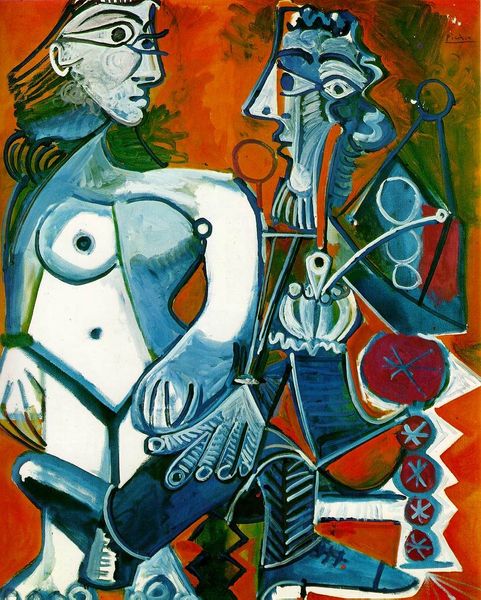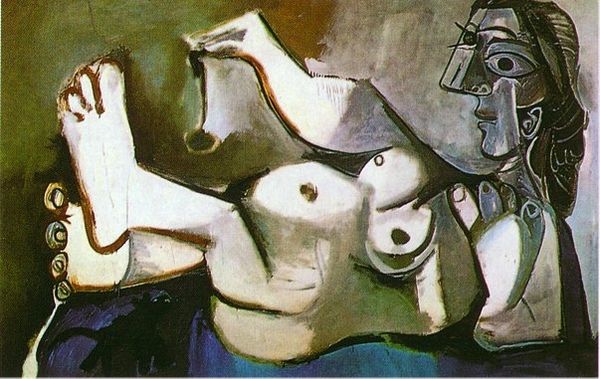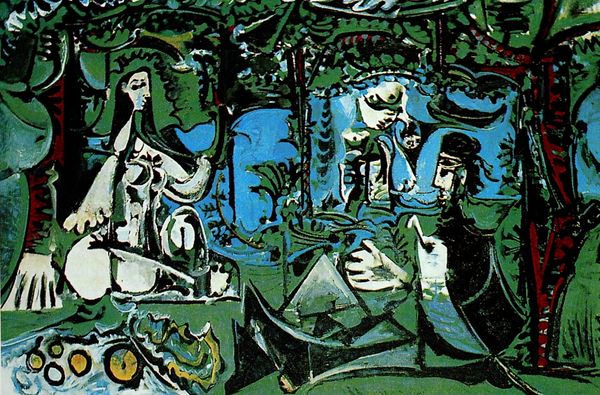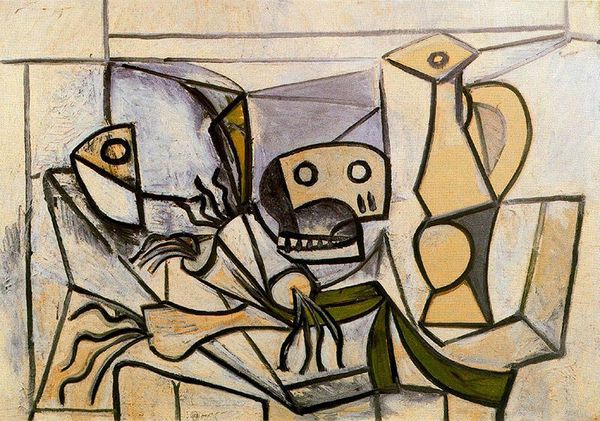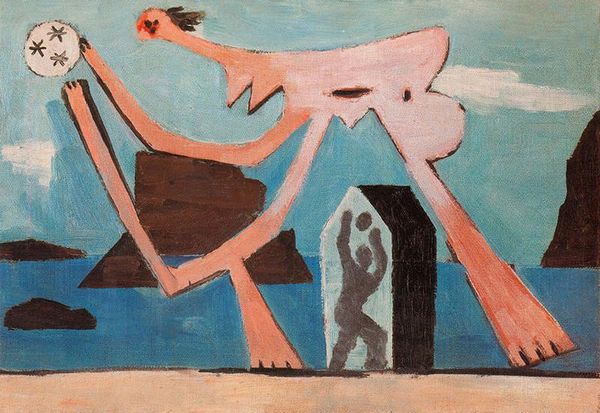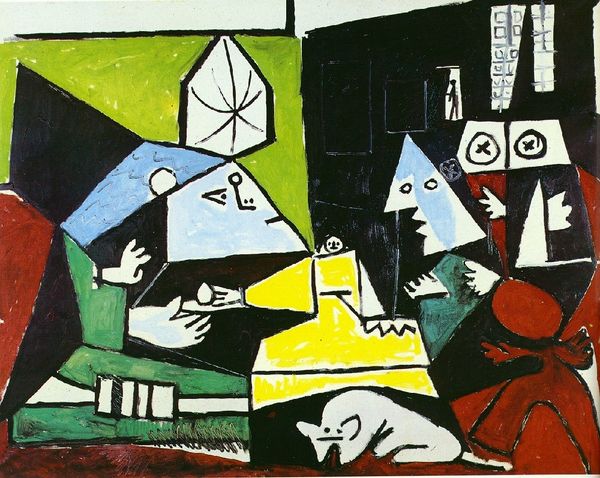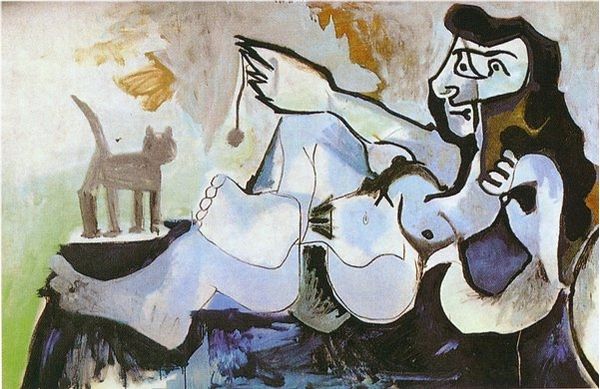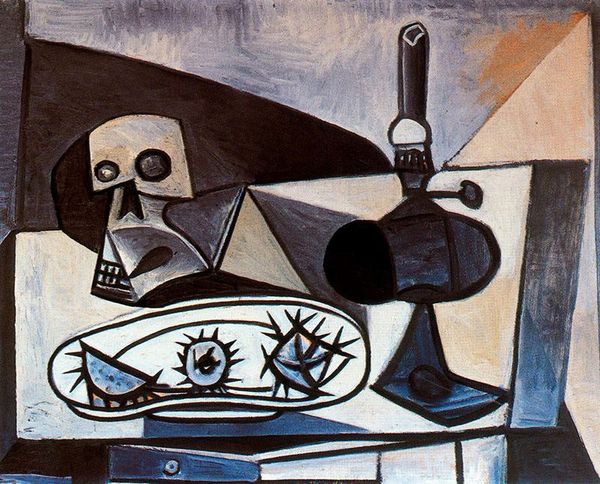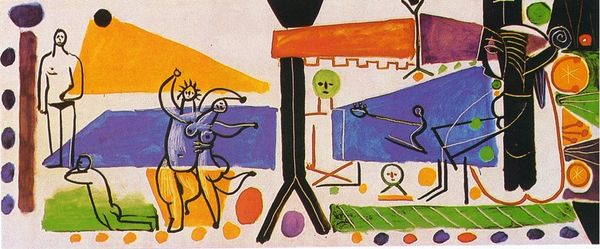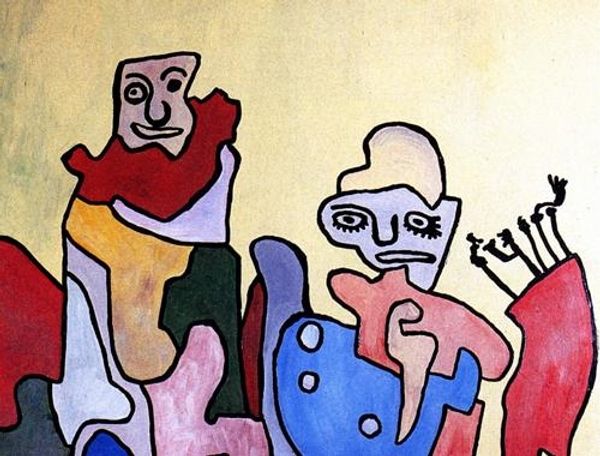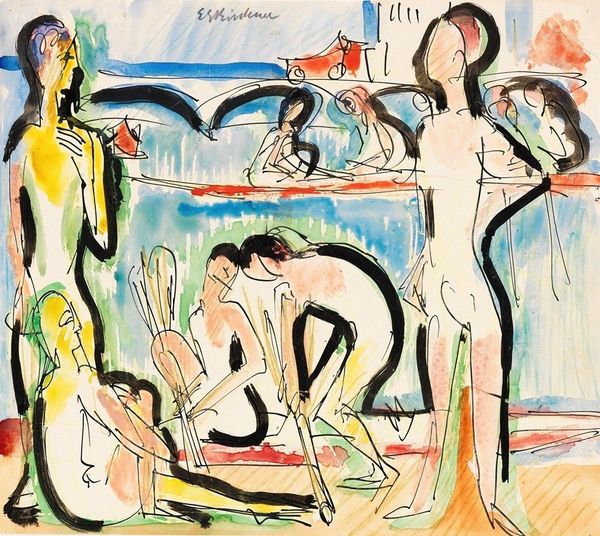
Dimensions: 80 x 190 cm
Copyright: Pablo Picasso,Fair Use
Editor: This is "The Beach at Garoupe," painted by Pablo Picasso in 1955, using oil paints. The scene feels both playful and unsettling to me; all of these faces and bodies, and the strange architecture. What do you see in this piece? Curator: Well, consider Picasso's fascination with mythology and his personal life intertwining. Those sun-headed figures, reminiscent of classical deities, aren’t just stylistic choices. They speak to his ongoing dialogue with the past, but through a lens of modern psychological insight. Do you see how these figures overlap and interact with the landscape, almost becoming part of it? Editor: Yes, the way the bodies sort of blend with the buildings, almost like they are constructed from the same materials. I notice, too, that some figures appear incomplete or fragmented. Is that intentional? Curator: Absolutely. Fragmentation became a hallmark of Cubism but also suggests the incomplete nature of memory itself. The beach setting isn’t just a backdrop; it’s a stage where memories, desires, and fears are enacted. The geometric shapes and fractured perspectives mirror the way our minds process experience—never fully linear or whole. And look at the use of contrasting colors. How does that impact your interpretation? Editor: The blues and greens of the ocean are stark against the ochre and whites of the figures. I guess it creates tension. I had not considered the psychological elements at play here. It is more than just figures on a beach; it's a visual representation of fragmented memory. Curator: Precisely! It reveals cultural memory, personal narrative, and the continuous effort to reconstruct ourselves. We understand our experience in dialogue with both. Editor: That gives me a whole new perspective. Thanks for pointing that out.
Comments
No comments
Be the first to comment and join the conversation on the ultimate creative platform.
